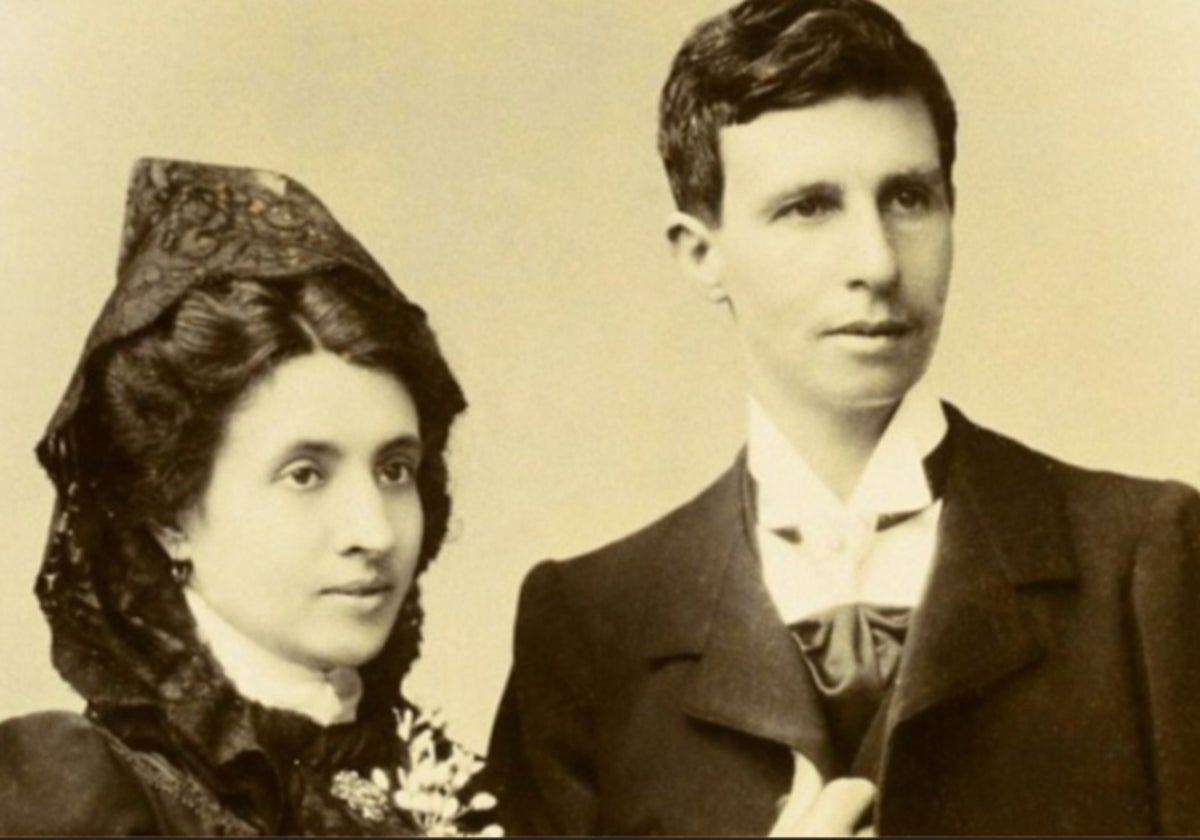Forbidden love: the first lesbian couple to be married in Spain
Elisa had to pose as a man and talk about an invented London childhood to get the chance to marry her girlfriend Marcela in 19th-century Galicia
Alekk M. Saanders
Friday, 14 February 2025, 13:37
Marcela Gracia was described as a colourful person, Elisa Sánchez was considered a passionate and courageous woman. Tired of hidden love, the women dared to defy social conventions. They are remembered in Spanish history for attempting to formalise their forbidden relationship by marriage in the church.
Love while studying
This story took place in Galicia 140 years ago. In 1885, Marcela Gracia and Elisa Sánchez, born into a conservative society in rural Spain, met in the city of A Coruña. Both girls were studying at a teacher training college, where their close friendship developed into love.
When Marcela's father, an army captain, noticed a particularly intimate relationship between the girls, he was afraid of a possible scandal. To avoid unpleasant consequences for him, he sent Marcela to Madrid to continue her studies. However, the distance did not help the lovers to put out the fire of love.
The small village of Calo is located near Cape Finisterre, considered the most remote and therefore called ‘the edge of the world’. It was to be the shelter of forbidden love
Four months later, Marcela graduated and the girls met again in Galicia. The small village of Calo (Vimianzo) is located near Cape Finisterre, considered the most remote and therefore called ‘the edge of the world’. It was to be the shelter of forbidden love.
In Calo, Elisa worked as a senior teacher, while Marcela taught classes in the neighbouring village and visited Elisa. In order not to attract unnecessary attention, the girls kept their relationship secret.
Identity change
One day Marcela and Elisa came up with a plan how to start living together. Elisa told the neighbours that she was leaving for Havana. In fact, she stayed in Galicia, and was preparing for her new role as... Mario, a cousin who had died in a shipwreck years ago.
Elisa adopted a masculine appearance: she cut off her hair, acquired masculine clothes and learned to smoke. She soon appeared as Mario Sánchez with an invented past. As Mario she told the villagers that she had spent her childhood in London and that her father was an atheist. This detail was emphasised so that Mario would be baptised under a ‘new’ name.
Elisa soon appeared as Mario Sanchez with an invented past. As Mario she told the villagers that she had spent her childhood in London and that her father was an atheist
Marcela welcomed Elisa's ‘relative’ with open arms and the doors of the church in La Coruña were opened to Mario. On 26 May 1901, Father Victor Cortiella baptised Mario, who also received his First Communion.
Not an ordinary marriage
At that moment, Marcela and Elisa found the strength to defy more the norms imposed by the society of the time. They decided to get married in the church.
On 8 June 1901, at half past seven in the morning, Marcela and Elisa-Mario stood in the small church of La Coruña and said ‘I do’ to each other in front of the priest.
Marcela was dressed in a very elegant gown. She carried a mantilla coquettishly and held a bouquet of orange blossom in her hands.
Elisa-Mario's suit was new and very well made. The gold chain and ring also added elegance to the ‘groom’.
The marriage ceremony was short, with the godparents witnessing its validity. It seemed to be an ordinary marriage, although it was actually the first marriage of Spanish lesbians in a church.
After the wedding, the newlyweds had chocolate and churros at their godmother's house. Then they did the typical procedure of going to the famous photographer José Sellier Loup, who took their portrait and, like many others, placed the picture in his shop window, a few days later.
The couple spent a few days in a guesthouse in La Coruña before travelling on their honeymoon to Porto in Portugal. However, soon they had to escape there.
Escape from Europe
There are several versions of the women's life after marriage. To sum up, Marcela and Elisa were eventually accused of falsification. The story of their forbidden love, which ended in a church wedding, quickly spread across the country. The women made the front pages of several national newspapers. Orders were given for Marcela and Elisa to be arrested, but they managed to escape to Portugal, changed their names and went into hiding in Porto.
Apparently, thanks to the women's solidarity movement, Marcela and Elisa were released and quickly embarked to Buenos Aires
The Portuguese police eventually found them, arrested and imprisoned them, charging them with forgery and transvestism. Spain demanded their extradition, but Portugal refused. Apparently, thanks to the women's solidarity movement, Marcela and Elisa were released and quickly embarked to Buenos Aires.
This was the end of the European story of two women in love, or rather the beginning of a journey towards equality and the recognition of different forms of love and the right to love whoever you want, regardless of gender.
